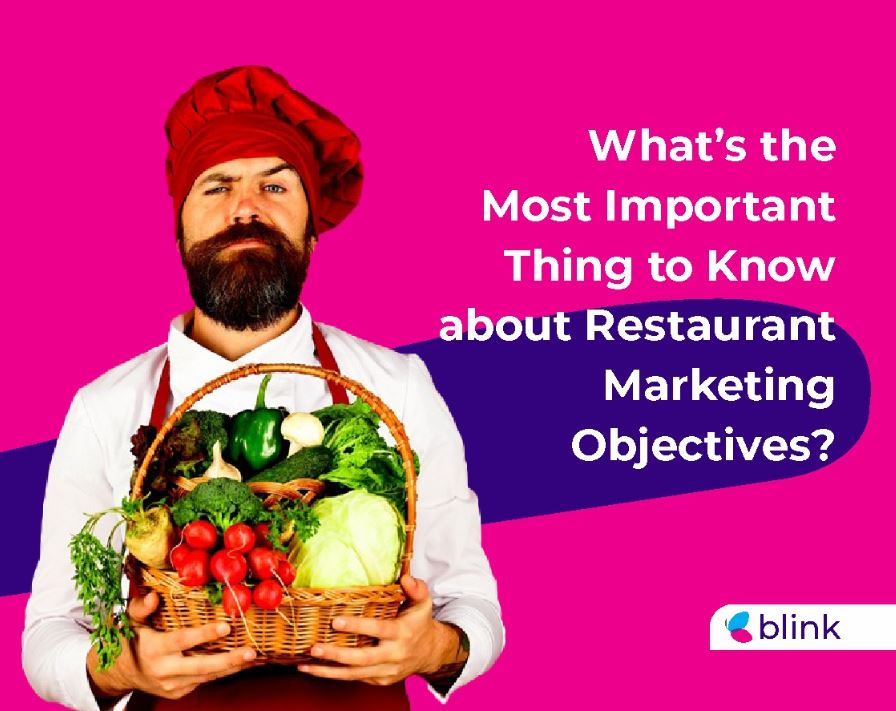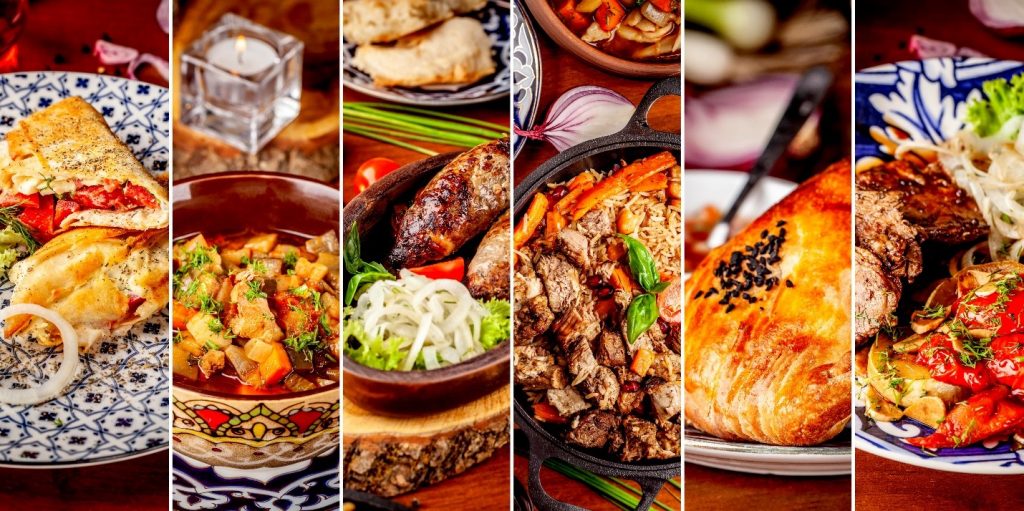Over the last few months, we have elaborated on all kinds of ideas for restaurant marketing.
We segmented our focus areas on helping medium-scale and thriving food businesses to scale their operations.
The result from our online readers was amazing. However, there was significant feedback coming in from food startups, as they also wanted sound advice on ideas for restaurant marketing. Since then, we have been working on creating a post that’s relevant to those food businesses that are just about getting started in the online food industry.
Some of the following marketing ideas for restaurants are also applicable to brick-and-mortar establishments. But the majority of emphasis is on helping you to scale in the online world.
Part of the reason for focusing on ideas for restaurant marketing related to internet-based opportunities is associated with a post-COVID-19 techscape. Many restaurants throughout the world were forced to go through a totally different experience, in view of the healthcare legislation.
For instance, if were to talk about the F&B market in the USA in the year 2020, you’d be surprised to know that it was a challenging long stretch for operators. Especially those businesses that didn’t focus much on ideas for restaurant marketing through internet platforms, suffered a lot because they didn’t have anything to fall back on.
So here’s to learning the ropes in 2021 and beyond because promoting your restaurant these days, roughly interprets to an entirely different breed of marketing strategies.
Let’s get started:
-
Partner with a Food Aggregator/ Services Merchant Who Understands Your Needs!

When it comes to converting your ideas for restaurant marketing into actionable plans, pay attention to whom you’re partnering with.
As a startup, we don’t recommend creating your own mobile food ordering app, and website because it tends to shave off a major chunk of your initial investment. Instead, go and sign up with a food services merchant who can help to fulfill your online orders and deliver them on time.
The problem is that not all food aggregators are the same. They may look like they’re doing the same thing, but many new food startups are oblivious to shady merchant fees and percentages.
In the online F&B industry, popular food aggregators charge retailers, and food businesses, like yours, by a specific percentage that’s applied on each incoming food order. Now that’s not an issue if the percentage for processing and fulfilling an order is around 12% to 14%, but what if it goes up to 35%?
A higher payment percentage – and that too, when applied on each order, will bleed through your profit margin. While you may get plenty of customers based on the food aggregator’s dominance on mobile food ordering app platforms, you won’t be able to generate profit on revenue.
Another very serious aspect of signing up with food aggregators, and online food services merchants is the additional fee that comes in the form of POS transaction charges.
A Pos system for restaurants is installed to accommodate flexible payments, self-service terminal transactions at physical restaurants, data gathering and reporting, and vice versa.
Many merchants charge an additional fee for deploying pos software updates for restaurants. As if that’s not an alarming factor, these merchants have the nerve to charge an additional 2% – 3% on each online transaction coming in through Credit Card payments from your restaurant customers.
We do understand that food aggregators eventually have to pay for processing credit card transactions, but it can be easily done if the percentage on each transaction is kept to a bare minimum.
For food business startups, we recommend partnering up with Blink Co.
Since its inception, Blink Co. has been a go-to platform for food business startups, and medium-scale businesses that rely heavily on marketing ideas for restaurants on a shoestring budget. Some of the best features of Blink Co. are stated below:
- White-labeled back end for restaurants, with front, end mobile app interface and WebOS website.
- Create an instant menu through a special menu creator.
- Convert customers through buying preferences, loyalty programs, and discount promos – all of which are offered to food startups without extra charges.
- Intuitive back-end dashboards for customer reports, marketing data, and POS transaction details.
- Dedicated fleet management portal with geofencing for tracking and monitoring rider activities.
- 24/7 responsive customer support.
- Flexible payment options for your restaurant customers through Blink’s payment modules integration.
Above all, the main reason for signing up with Blink as a restaurant is a user-friendly fee structure that works on the basis of monthly payment plans. That means you won’t have to worry about paying against commission percentages applied on each incoming order.
Find out more at Blink for Restaurants Page today.
-
Focus on Menu Engineering:

Your Basic Restaurant Menu Engineering Matrix
Menu engineering is often a neglected component of ideas for restaurant marketing. Especially, when it comes to food business startups, their strategy is to create a unique menu with special dishes and competitive rates. That’s fine.
But, did you know that menus need to be engineered, and there are 4 different quadrants of restaurant food order menus? We wrote an in-depth guide on how to engineer your restaurant menu. You can check out that post here, but the gist of this whole thing is to focus on Puzzles, Horses, Dogs, and Stars.
Puzzles are those restaurant menu items that perform well when they are bundled with menu order deals. In an isolated case, Puzzles may not sell well – and even if they do, the reasons are mostly ambiguous at best.

Speaking of menu engineering, creating an online restaurant food order menu from the convenience of an aggregator app is equally important. Ideally, creating your menus or making changes to them shouldn’t take long.
Analyze your competitors and focus on your unique selling proposition through your menu. It will work towards your brand identity, as people will relate your special dishes to your restaurant in time to come. Whatever you do, never ever get carried away with prices. Oftentimes, the cheapest selling items are the backbone for thriving F&B online businesses due to high incoming order volume.
Play around with pricing, and see what works best.
Above all, learn the art of restaurant menu engineering during the founding years of your business to avoid inconvenience and overspending in trying to figure out why your menu isn’t working anymore.
-
Loyalty Programs Galore:
Restaurant loyalty programs work best when they are blended with hard to resist deals.
Notch it up further, refer to your previous customers’ buying habits to pinpoint which deals sell the most, and which one don’t. Gather the results and combine your neglected food order menu items with bestsellers, and promote them through strap line announcements that’ll go in the above-the-fold section of your food order mobile app.
Who says, your customers cannot have a side of ‘Devil’s Delight’ chocolate cake on specific days only? Want to reward your special customers for being seasoned regulars? How about enticing folks through cashback programs against a specific number of online food orders?
There are plenty of loyalty programs that make up for Ideas for restaurant marketing in 2021. You can also gain insight into running your reward programs by looking at what your competitor is offering. Rinse and repeat, but with a personal touch that’s identical to your name-brand food business’s KPIs.
-
Do You Have a Restaurant CMS or Blog?

Blogs are a great way for updating your customers through a passive reel of different articles.
Many food businesses direct the scope of their blogs to send out press releases. That’s good, but when you are looking to beat the competition in 2021, blogs can be great for retaining online customers.
While maintaining a blog, make sure that it follows a specific content format. You can share posts themed around recipes, quick kitchen hacks, and different ways to order food through online portals. However, make it a habit to place special sections in your content to improve your CTR (*Click Through Rates).
A good example of converting blogs would be to focus on helping people to redeem reward points through your food ordering mobile app. You can talk about different steps to creating an account, with pointers on where to click and sign up. And then, briefly explain the points redemption process through a simple step-by-step format.
The above idea is just one aspect of online restaurant blogs. There’s so much more to it as you go by and explore the content management realm.
Post updates that are relevant to your customers, and focus on long-tail keywords to improve your results in Google SERPs.
-
Don’t Pass Up on Special Local Events:

As one of the tried and tested Ideas for restaurant marketing regarding mobile food businesses, this one’s extremely useful.
Keep an eye out for special public get-togethers, conventions, and events where people in your locality join up. All you need to do is park your food truck near the venue and post and update about it on your social media channels. It’s like hitting two birds with one stone. You will not only amass user attention through your social media posts, but the people from the venue will also end up buying something from you.
Many times, venues don’t charge a rental fee to food truck businesses – especially if the event organizers forgot to make last-minute arrangements for food and drinks. You’d be doing them a favor. But, if they do demand a “service fee”, go ahead and oblige. Your profit margin will eventually cut through the breakeven point easily by the end of the day.
What Else Is There to Talk About?
If you are interested in learning more about Ideas for restaurant marketing at full brevity, scroll through our previous blog posts.
We highlighted only a handful of strategies that weren’t discussed earlier. In case, you have any questions about getting started on implementing your marketing ideas, and how to deal with setbacks, share your thoughts in the comments section below.
We’ll get back to you later with a detailed response.
Above all, make sure you bookmark this post because we’ll be updating it from time to time. It’s always good to fall back on a tips and tricks post that’s constantly updated with the latest information that works for restaurant marketers from time to time.
Related Articles:
 5 of The Best Restaurant Social Media Campaigns (New Guide)
5 of The Best Restaurant Social Media Campaigns (New Guide)
 20+ Restaurant Industry Statistics Restaurant Owners Need to Know
20+ Restaurant Industry Statistics Restaurant Owners Need to Know
 7 Group Friendly Restaurants in Saudi Arabia
7 Group Friendly Restaurants in Saudi Arabia
 Blink is a Great Restaurant Analytics Software
Blink is a Great Restaurant Analytics Software
 Quiz Marketing: A Fun and Effective Way to Generate High-Quality Leads for Your Business
Quiz Marketing: A Fun and Effective Way to Generate High-Quality Leads for Your Business
